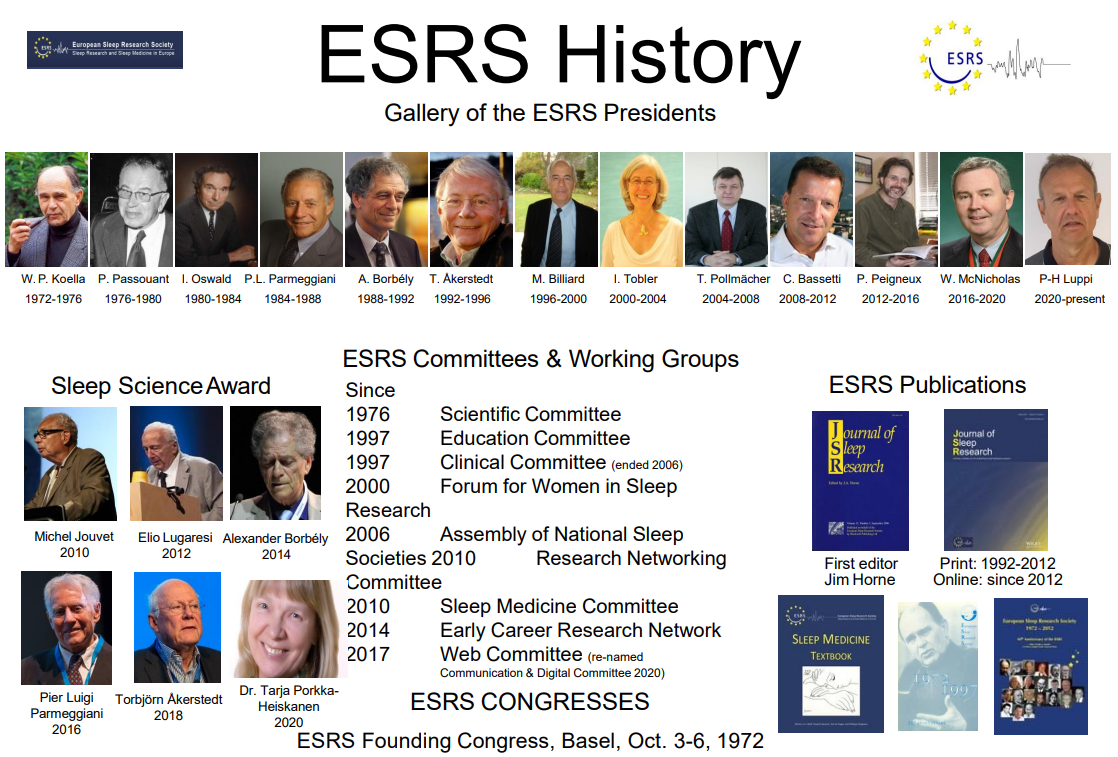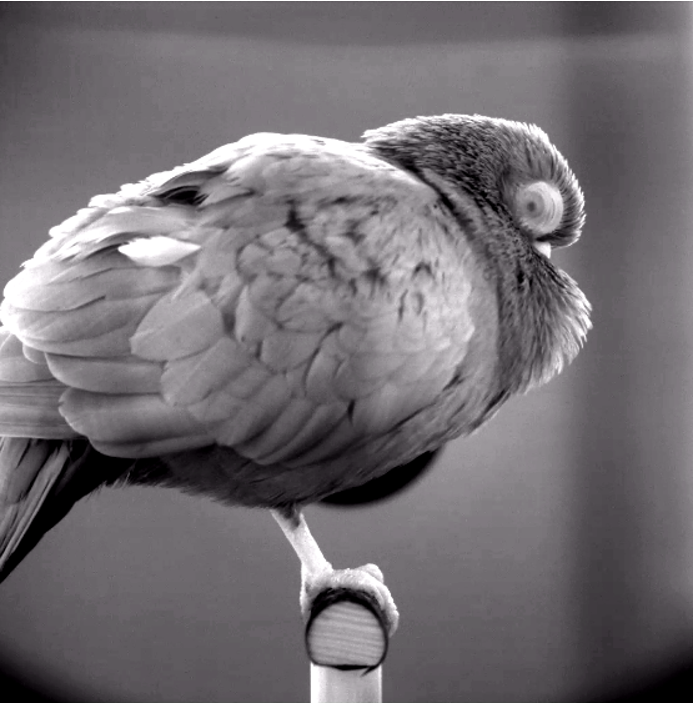Pupillary Behavior of Birds During Wakefulness and Sleep

Gianina Ungurean

Niels Rattenborg
The pupil literally plays a central role in vision: it is the opening in the middle of the eye that regulates how much light falls on the retina. If it is dark, the pupil becomes large and lets a lot of light through – if it is bright, it becomes small and prevents us from being blinded. However, it not only regulates the incidence of light, but also reflects emotions and the state of the brain. If we are excited or concentrated, for example, the pupils enlarge – without us being able to influence it.
In birds, pupil sizes have never been systematically studied. Yet, rapid pupil constrictions are a well-known feature of bird body language among parrot owners. In this study, pigeon pupils were tracked using miniature camera modules during wakefulness and sleep. Surprisingly, the pupils of male pigeons became smaller during courtship – in contrast to mammals, in which the pupils dilate during arousal. This finding raised the question whether such differences manifest during sleep as well.
Recently, it was shown in mice that pupil size also changes during sleep: In deep non-REM sleep with quiet behavior, pupils constrict; in more active REM sleep, they can slowly dilate. The transparent eyelids of pigeons and infrared back-illumination pupillometry allowed pupil size measurements while the birds’ eyes were closed and in the dark. Again, the birds’ pupils did the opposite to mammals: they dilated during non-REM sleep, but during REM sleep, the pupils rapidly constricted over 1,000 times a night, a phenomenon the researchers called rapid iris movements (RIMs).
The study also found that pigeons’ pupil behavior is present in a cuckoo species, suggesting that it is a general trait among birds. These results suggest that basic behaviors such as pupil size can be completely opposite in different animal groups. Examining why this difference exists might cause us to reconsider our understanding of pupillary behavior, in general.
In birds and mammals, pupil size is regulated by different types of muscles in the iris. Mammals use smooth muscles, which cannot be controlled voluntarily. Birds, on the other hand, regulate the pupil by striated muscles, like those that move our arms or legs, for example. In a pharmacological experiment, where a drug was used to silence receptors that activate striated muscle cells, the pigeons no longer constricted their pupils during sleep, suggesting that this structural aspect is a possible cause for the different pupil behavior.
Pupil constrictions in sleeping birds might fulfill important functions. The constriction could exercise the iris muscle’s fine motor skills, like other types of twitches of skeletal muscles occurring in REM sleep. But it could also be a byproduct of brain activity patterns reoccurring during REM sleep, following their occurrence during awake aroused states. In this regard, pupil constrictions during REM sleep could help to determine when and how the sleeping brain processes memories.
REFERENCE
Ungurean et al. (2022). Pupillary behavior during wakefulness, non-REM sleep, and REM sleep in birds is opposite that of mammals. Current Biology.
Guira Cuckoo RIMs
Budapest Pigeon RIMs
ESRS Announcements
Sleep Europe 2022 Abstract Submission
We invite you to submit your abstracts for the 26th Congress of the ESRS. All accepted abstracts will be published in the Journal of Sleep Research as well as in the interactive programme online. This will allow your research findings to be seen by professionals around the globe.
Application Deadline: 21 April 2022, 23:59 CET
More details here.
2022 Sleep Medicine Examination Application
P.S. Apply to receive 1 of 6 sleep medicine examination grants for the 2022 sitting.
ESRS Funding Opportunities
Please note, our website www.esrs.eu will be undergoing scheduled maintenance and may not be available on 1-February. We ask that you please plan accordingly and apologise in advance for any inconveniences this may cause. We look forward to bringing you an improved user experience from 2-February.
News
2022 EAN Congress Abstract Submission Extension
Recent publications from ESRS members
- Kazemeini et al. (2022). A pilot study on comparison of subjective titration versus remotely controlled mandibular positioning during polysomnography and drug-induced sleep endoscopy, to determine the effective protrusive position for mandibular advancement device therapy. Sleep Breath.
- Dahlgren et al. (2022). Randomised control trial of a proactive intervention supporting recovery in relation to stress and irregular work hours: effects on sleep, burn-out, fatigue and somatic symptoms. Occup Environ Med.




